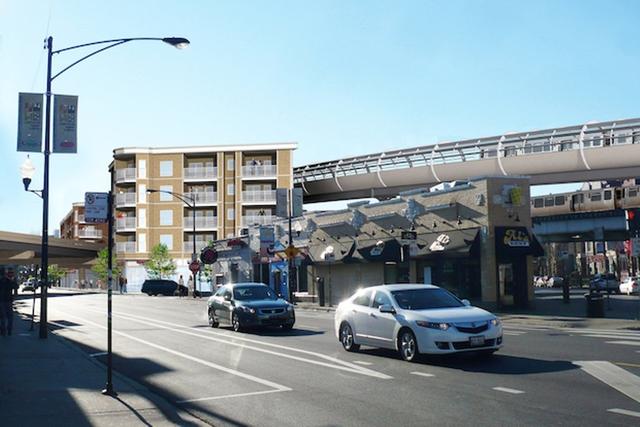With More Chicagoans Living 'Car Free,' Residential Parking Could Go To Waste
By Rachel Cromidas in News on Jun 20, 2015 4:00PM

A rendering of the proposed Belmont Overpass.(Chicago Transit Authority)
Anyone who knows the struggle to find parking in many North Side neighborhoods might find this one surprising: As many as half of the residents of El-adjacent communities north of the Red Line Belmont stop don't have cars and don't use their allotted parking spaces.
That's according to analysis of city data by the Metropolitan Planning Council, which advocates for green transportation and adaptive urban reuse.
City law requires new development projects to include lots of off-street parking for residents, workers and shoppers, with the goal of reducing congestion on the street. For residential developments, the requirement is between one and two spaces per unit, depending on the zone (except in select places where new transit-oriented developments reduce the parking requirement). In Lincoln Park, the requirement is one space per unit; in Jefferson Park and other neighborhoods far from the city center, the requirement is two.
The result is excess parking spaces that aren't necessarily being used. They're taking up land and resources that could be put to use in other ways, MPC's Yonah Freemark writes:
These parking requirements were created decades ago with the goal of ensuring that peoples’ automobiles do not crowd the street ...We’ve learned, however, that these requirements have some negative effects. Parking that is provided for free at offices increases the number of people choosing to drive to work, reducing the use of the transit system and exacerbating pollution and congestion. Parking that residential developers are required to provide with new homes increases housing costs even for those who do not drive, in essence forcing them to pay for the construction and maintenance of parking they may not even use.
Freemark is hoping Chicago's city council could one day follow in the footsteps of legislators in Minneapolis, who are considering a major zoning law change that would reduce the city's parking requirements for new developments. The law would be much more broad than Chicago's TOD ordinance, which only covers buildings built on about 2.8 square miles of land in the city total. And when you consider that about 20 percent of land in the city is within 350 feet of a CTA bus or train stop, the potential impact of future TODs under a new law could be much greater.
What else could be accomplished if Chicago required less new parking spots to be provided? Like Freemark noted, it has the potential to lower housing costs, for one, and also increases the likelihood of developers adding more green space to their projects and city officials increasing public transit service. If the trend among many Chicagoans is to continue moving closer to living car-free, those changes could have a much bigger impact on neighborhood quality of life than will a few unused eight-by-nine-foot patches of concrete.